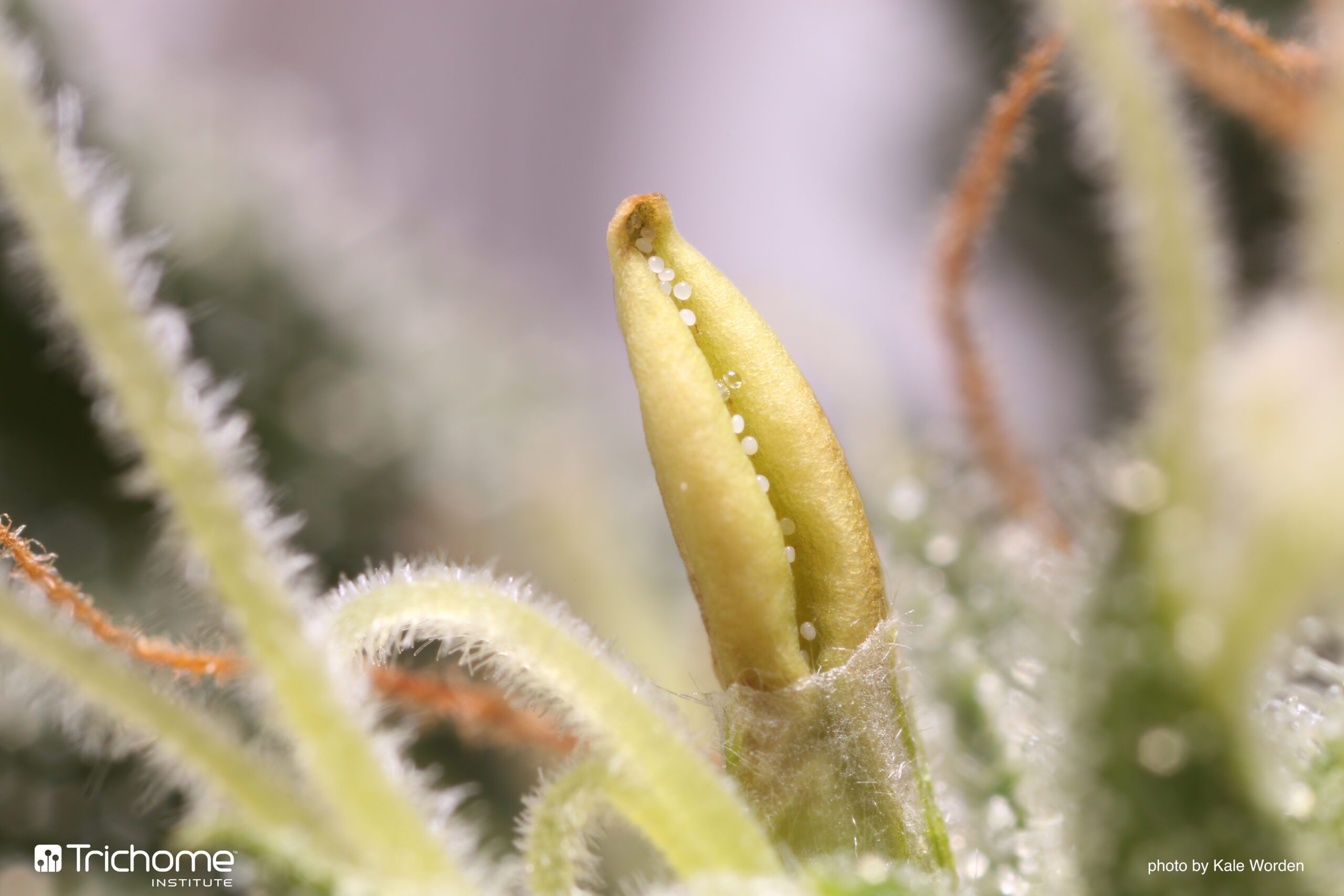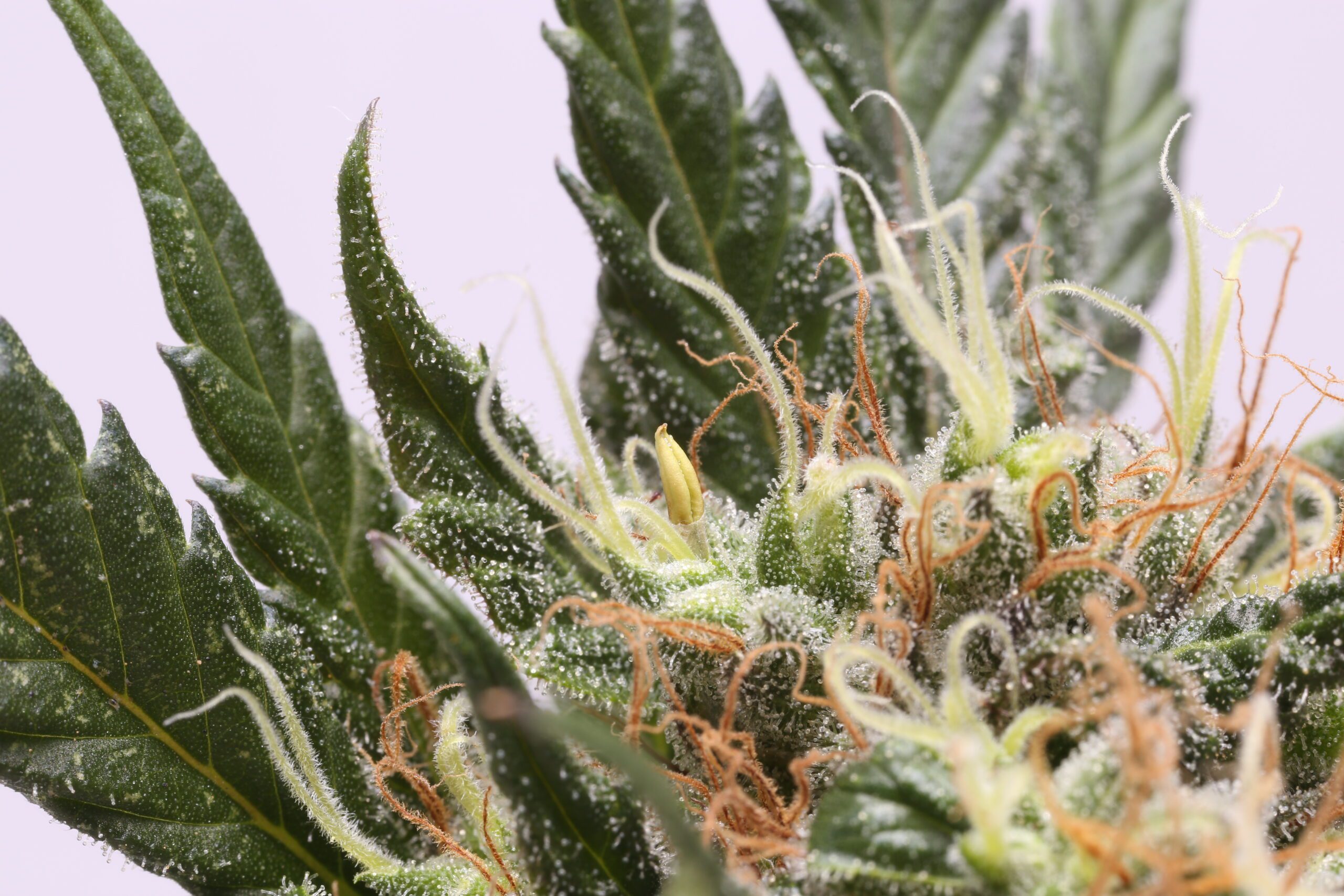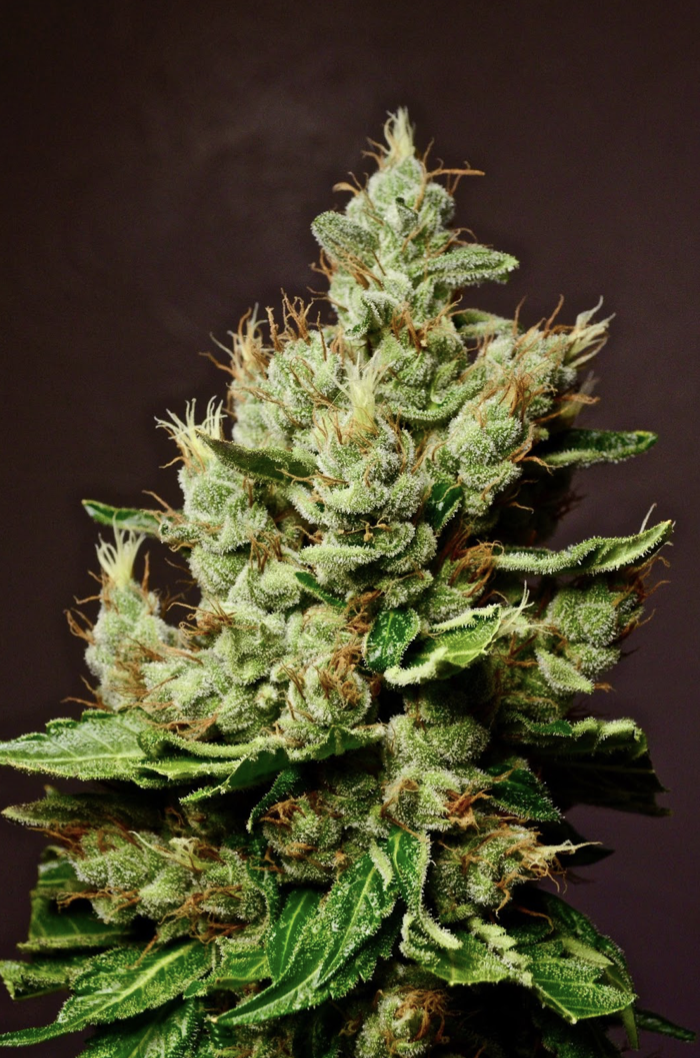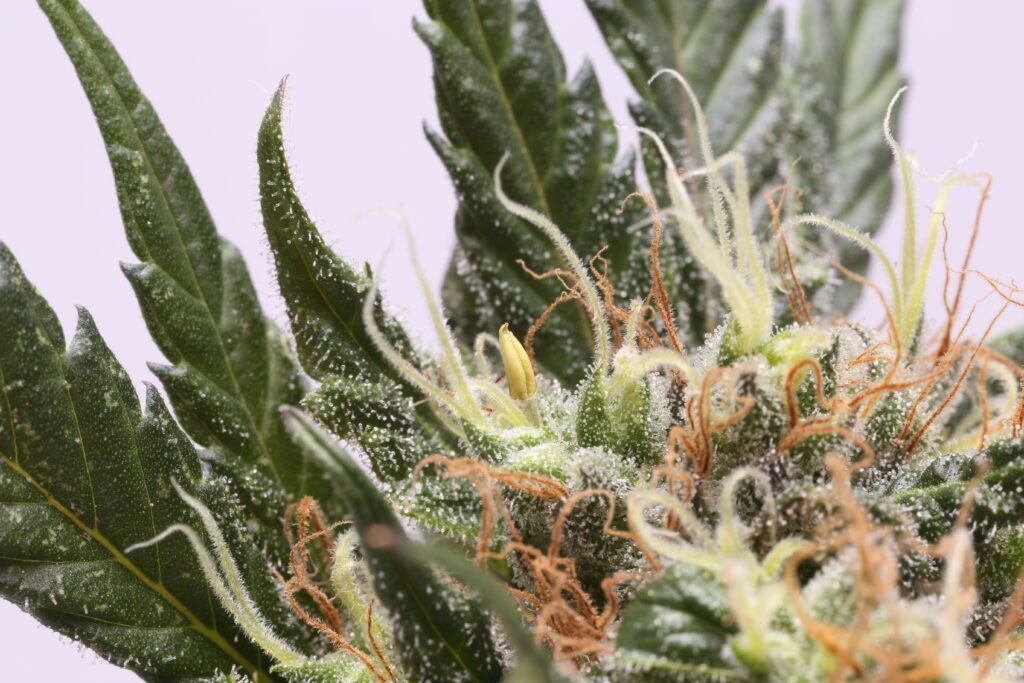The nuance of cannabis hermaphroditism during different flowering periods deserves a closer look. In addition to everyday hermaphrodites, some plants experience changes without showing signs of the opposite sex.
In the most specific aspect, small banana-shaped anthers (male pollen sacks) amongst the pistils (female pollen collectors) are an undeniable sign of a hermaphrodite. Yet there are instances of hermaphroditism being anther free, which is a more complex concept and observation even the most experienced growers may miss.

Let’s cover the basics first. Cannabis is a wind-pollinated (anemophilous) flowering plant (angiosperm) that has a separate male and female sex (dioecious) 99% of the time, which is rare in the plant kingdom. When we farm cannabis for smokable flowers or extracts, we separate the males from the females. Hence, they are seed-free. When something goes wrong during the flowering stage of growth, it can sometimes cause the female plants to become a hermaphrodite.
Tons of different environmental stressors could cause a female plant to herm out. Too much or little light, nutrients, water, pests, chemicals; all sorts of things can cause hermi stress. One of the most impactful ways cannabis herms out, besides chemical selfing, is a sudden opposite photoperiod. Meaning the lights are on when they should be off. This is a grower screw-up badge I’ve earned myself on several occasions throughout my growing experience. Distractions happen, and sometimes easy to forget to turn off the little basement light inside the grow. Oops.

If you’ve spent thousands of hours obsessively observing your girl, you’ll surely come to find cannabis is more than just a plant. Cannabis is magnificent, with unique features and conscious tendencies. Cannabis plants enjoy certain types of music, sleep at night, and do a rising sun salutation first thing in the morning. You can even hear them sing different songs, with the right equipment, throughout the day. And like other plants, cannabis watches the sun as it moves across the horizon, turning their bodies to keep their faces pointed at the light. So imagine what these plants must “think” is happening when bright light turns on at night coming from millions of years of natural evolution where that typically never happens.

The most straightforward explanation is the plants are simply confused by this extreme and bizarre occurrence in their environment. What could naturally cause constant bright light in the middle of the night? Whether it’s an alien spacecraft, forest fire, hardcore thunderstorm, or a volcano blowing off, it is terrifying when you’re a plant stuck in the ground and can’t run from the danger. Natural disasters are scary events. Therefore, these conscious plants must be fearful they may not live up to their ultimate life purpose due to the disaster, reproduction. Without having seeds or knowing if a male is around for survival, they hermaphrodize in an emergency attempt to self-breed, which is the point of selfing. Some species of frogs and other animals achieve this incredible feat for similar reasons. I have no evidence that cannabis experiences fear. It makes the most logical sense and is an exciting way to explain why cannabis may transform due to photoperiod shock.
Unfortunately, there isn’t a white paper with hard evidence on the spectrum of hermaphroditism during the different flowering stages and how they differ. From lots of experience and observation, the plants seem to have enough strength and time to muster up the opposite sex’s organ deep within the DNA code when it is in the earlier stages of flowering. Many narrow leaf types can flower for around ten weeks. Suppose they experience a shocking photoperiod within the first four to six weeks. In that case, they seem to grow anthers amongst the fresh pistils evenly, which is an obvious hermaphrodite.
Like humans, cannabis females reach a point in their age when they can no longer receive pollen to produce viable seeds. You can see this by observing fresh and fertile pistils turning reddish-orangish-brownish as they dry up toward the end of flowering. A less apparent hermi is one that begins the hermaphroditic transformation well after she has already matured and experienced “menopause.” In this instance, simply growing anthers/bananas wouldn’t help her achieve the goal of selfing, since all her pistils have become infertile. She needs to reproduce both anthers and fresh pistils for them to pollinate, but can she achieve such an intense feat in such a short period?
Through observation, it seems she can muster up just enough strength right before the end of the flower to hermi with clusters of fresh and fertile pistils. BUT doesn’t seem to have enough power to grow the opposite sex organs in the nick of time. Observe how both fully mature pistils come out of each bract with clusters of four to ten pistils emerging from single bracts, with no anthers present. This is due to the light shock at the very end of flowering.
If she were a bit younger and had more time on her hands and energy, I bet she would have grown anthers, and you would have seen them, but not in this instance. As if she tried her best with whatever time and energy she had left and couldn’t find where she was hiding the blueprints to grow herself a pair of balls in her final stages of life. Poor thing. So they didn’t make it in the picture, just old ganja lady pistils and clusters of young ones too.
How much does this no-anther hermi observation matter? Not much at all; it’s rare, especially in the industry today, and doesn’t affect the overall quality or potency of the plant. It’s simply one of the dozens of peculiar things covered in the interpening program to sharpen our student’s expertise.
We cover a lot of concepts in Interpening that the industry doesn’t touch on, from micro-seeds and the 7th trichome to trigeminal nerve stimulation, typicity, and much more. Interpening is where the sommelier aspect comes in; the extra freakish knowledge from study and immersive experience is the art and science of knowledge beyond what we must know.



